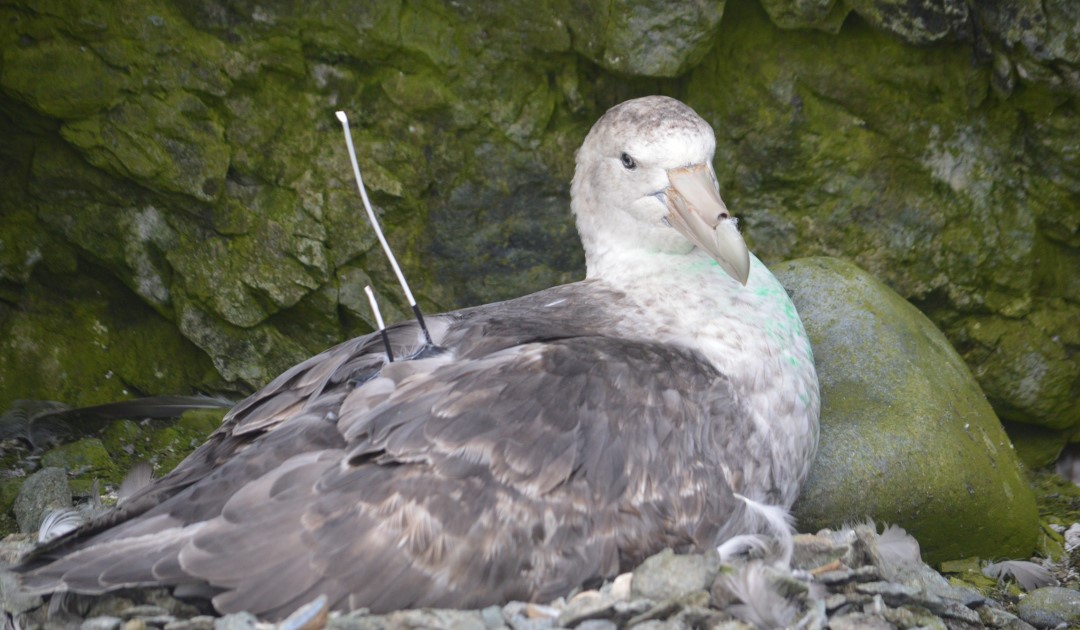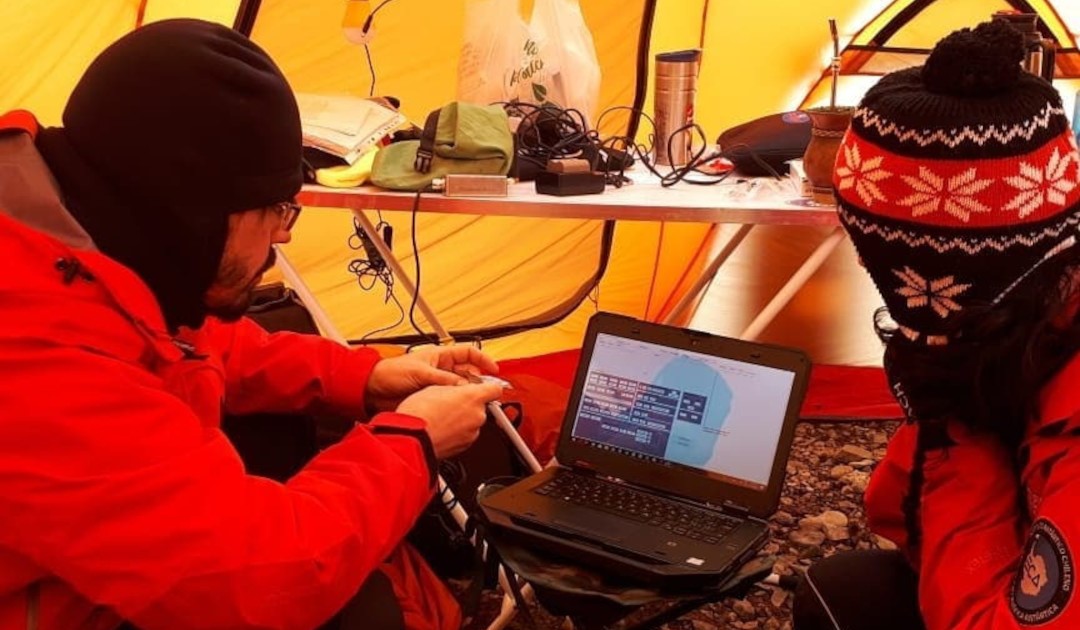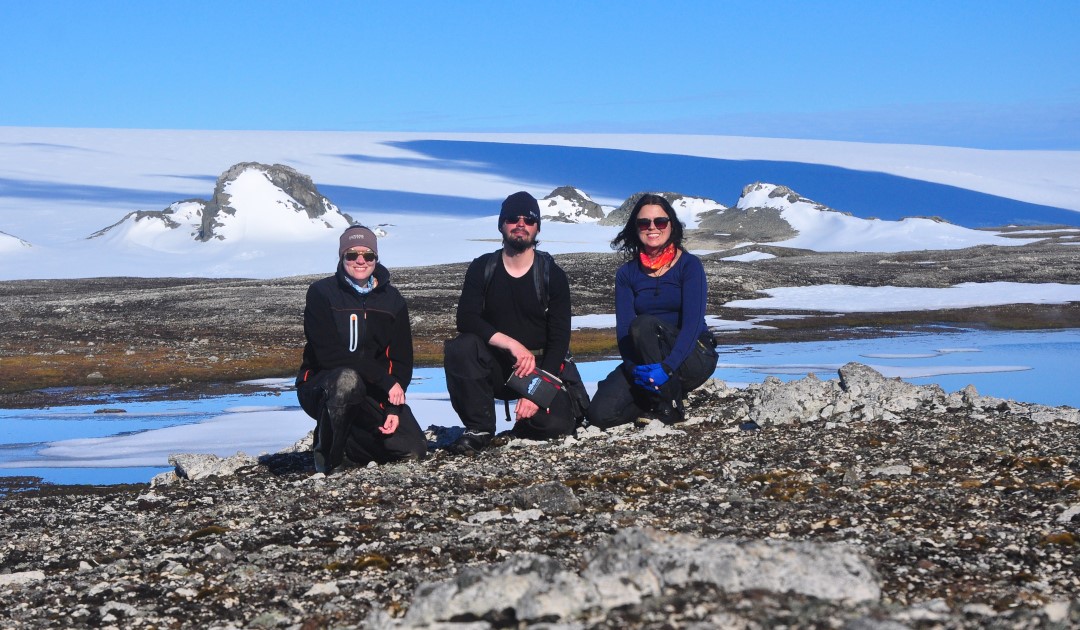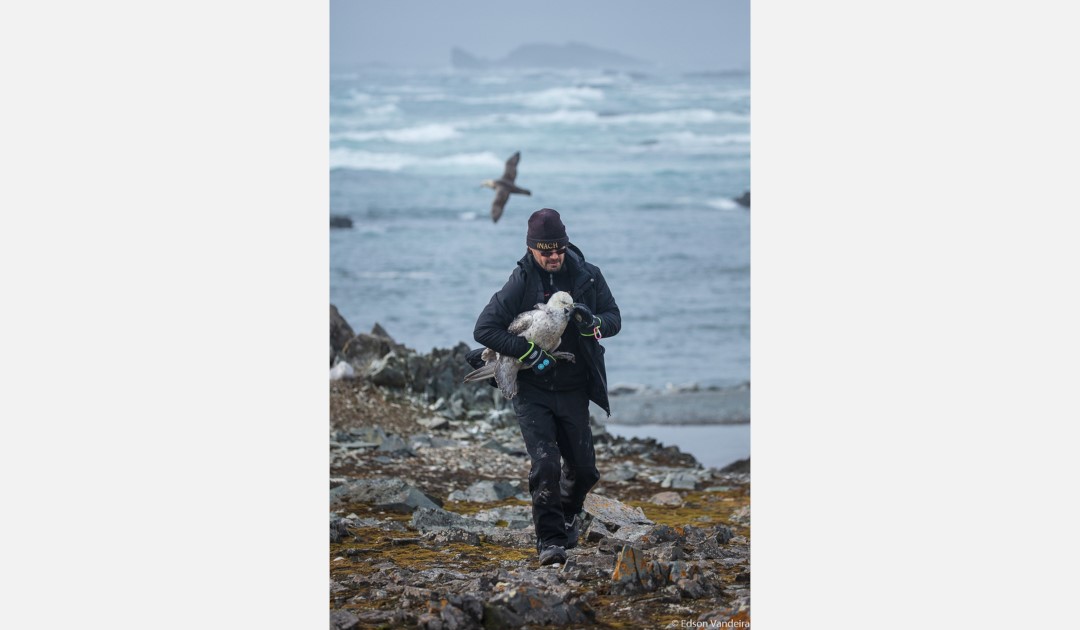
Like the albatross, the giant petrel could be used to monitor fisheries in the Antarctic. Opportunistic, its home range allows it to cover a vast territory.
Chileans and Brazilians are developing a way of using giant petrels to monitor illegal fishing using sensors, and at the same time to track environmental changes in the Antarctic. This research follows on from that carried out by French researchers on albatrosses.
Ornithologist Lucas Krüger, from Chile’s Antarctic Institute, and his colleagues have published their findings in the Cambridge University Press journal Antarctic Science. The research was financed by Chilean public research funds (Programa AMP, Programa Iniciativa Milenio ANID de la Milenio BASE and Fondecyt).
“Albatrosses are more like sentinels, whereas southern giant petrels are more like monitoring birds,” explains Lucas Krüger. The former breeds in the sub-Antarctic islands, while the latter in Antarctica.”
On two occasions, the team fitted 67 birds with beacons to track their position between 2019 and 2022. Each bird was tracked for an average of 40 days from Harmony Point on Nelson Island in the South Shetland archipelago.

“Birds can use their sense of smell to detect concentrations of biomass outcropping on the ocean, algae, crustaceans and squid,” he adds, such as in Antarctic Sound, at the extreme tip of the peninsula, where other large predators are also concentrated.
Some of these areas could one day be fished, while others are already being fished. The possible increase in krill quotas around the Antarctic Peninsula is dividing CCAMLR managers.
The proponents argue that there is no evidence that this would be harmful to wildlife, while the conservatives invoke the precautionary principle because there is a lack of knowledge.
Then there’s illegal fishing. Giant petrels can be attracted by the remains of animals caught in ghost fishing gear or longlines from illegal vessels.
Birds equipped with GPS mark straight trajectories when following a ship. By comparing with other fisheries surveillance systems such as AIS, or remote sensing, illegal fishermen can be located and boarded.


“If light-sensitive cells detect lights at night, this could be evidence of interactions with ships, as at Elephant Island in 2010-2011,” he adds.
In these birds, both sexes can be attracted by fishing vessels. However, during the breeding season, females travel further and for longer.
Offshore, they eat crustaceans and squid. Like the males, the females also live on the coast, feeding on carcasses near groups of animals.
Their journeys could help to spot small colonies of penguins or southern elephant seals, which are less easily detected by satellites.
“We’ve also tried using cameras, which work during the flight and give us images of the fractured pack ice, but by changing the position of the camera, we could count the penguins and seals when they’re on land,” predicts Lucas Krüger.

“They interact with many environments between the Bellingshausen Sea, the Weddell Sea, the ice edge and South America,” he concludes.
The cost of monitoring such a large territory is a challenge for research. Lucas Krüger and his colleagues see this bird as a potential partner.
Camille Lin, PolarJournal
Find out more about this topic:





